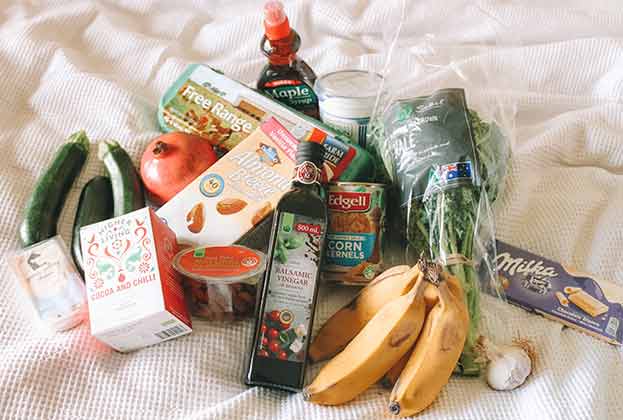After a strong start of the year, retail investment slowed down in Q2 and Q3 and is 11% below the five-year average
Second lockdown weighs on consumer confidence
Europe’s major cities remained in the midst of a second lockdown, further denting business confidence as the economic recovery shifts from a ‘V’ shape to the previous downside scenario of a ‘W’. Focus Economics latest November 2020 Euro Area GDP growth forecasts indicate a slump to -7.9% YoY during 2020, with a 5.3% YoY recovery in 2021. Forecasts could be revised up, following the announcements of the effective vaccines, that could be distributed as early as next year.
Consumer confidence again dropped in October from -13.9 to -15.5 as a result of reinstated lockdowns and gloomier sentiment over the economic outlook, hindering planned retail expenditure. Despite the extension of a number of Europe’s furlough programmes and increased eurozone household savings ratios during Q2 2020 to 25% of income, the potential for a quick consumer bounceback appears limited.
In September, EU volume of retail trade fell by 2.0% on a monthly basis, following a 4.2% increase in August. However, on an annual basis, retail trade was 2.2% above last year’s levels. This has been supported by online activity (17.4% YoY), but also electrical goods and furniture (10% YoY), electronics and books (2.9% YoY) and food (2.9% YoY).
Mixed trends in retail investment
The trends in the retail investment market have been diverse this year, reflecting the sector’s ongoing transition. Q1 was one of the strongest on record with over €10.8bn invested in prime shopping centre portfolios and single assets, supermarket portfolios and retail warehouses. A number of mega-deals took place in Southern Europe, although activity was spread across markets with sizeable deals also in Germany, France, the UK, Netherlands and Norway. The supply of product has been driven by investors who are aiming to reduce their exposure to the retail sector and owner-occupiers who are trying to raise capital through sales and leasebacks.
Supply of product has been driven by investors who are aiming to reduce their exposure to the retail sector and owner-occupiers who are trying to raise capital through sales and leasebacks
Savills European Research
In the second quarter, we were already in the heart of the pandemic and after a lockdown that has caused major disruption to retail formats that sell nonessential goods. Retail investment recorded the lowest quarter since 2013 at €4.9bn. Ongoing portfolio deals in France, Germany, the UK and Poland kept market activity going.
The third quarter, although it was still the lowest since 2013, it was 5% above Q2 at close to €5.1bn. The transactions' list was led this time by portfolio transactions of retail parks/warehouses and supermarkets in France, Spain, Italy and the UK. On an annual basis, Q3 was down across all markets by 35%, with the only exception being the UK, where a total of €1.65bn worth of retail transactions were completed in Q3 this year, 128% above last year’s level. Supermarket portfolio transactions, but also retail warehouse and shopping centre sales underpinned the activity.
All in all, Q1–Q3 2020 retail investment volume amounted to €20.9bn, compared to €20.8bn last year and was 11% below the five-year average. Retail maintained its proportion of the total real estate investment in our survey area at 17%, compared to a five-year average of 18% and above last year’s 16%. It is worth noting, however, that some of the retail assets transacted, may be repurposed and change use in the future.
Germany accounted for 30% of the activity, the UK for 19% and France for 14%. It is worth noting that activity in Germany, France, Sweden, Portugal and Spain has already exceeded last year’s levels.
Supermarket and convenience on top of investors list
In Germany, the sectors that have registered the highest increase in Q1-Q3 2020 compared to their five-year average (full year) were Cash&Carry (€819m, 307%), Supermarkets (€2.2bn, 197%), Shopping centres (€957m, 106%), Discounters (€536, 83%), Department stores (€2.25bn, 62%) and DIY stores (€486, 60%). Investor confidence in the German market has been further enhanced this year, as the economy is holding up better than other countries during the health crisis.
The Iberian markets saw €608m of Supermarket/Hypermarket deals up to early Q4, which was 120% above the full-year five-year average. Retail warehouse investment activity was 36% above the five-year average at €179m, while shopping centres were 53% below the trend, despite the large deals that took place in Q1. During the lockdown, the food retailers increased their turnover (e.g. Mercadona), while post-lockdown retail parks/retail warehouse concepts have been more resilient – as in many places in Europe.
Supermarket transactions were also above the five year average in Poland (64%), Italy (76%), while in the UK the sector had already picked up significantly over the past two years and sustained its high levels of activity at over €1.1bn.
Total supermarket investment in the countries we monitor was close to €5.2bn at the beginning of Q4, 40% up YoY. The lions’ share was captured by Germany (€2.2bn), followed by the UK (€1.2bn) and Spain (€608m). Between 2013 and 2019 supermarkets (including hypermarkets and discounters) accounted for no more than 7% of total retail investment. In 2019 their share increased to 19% and in 2020 jumped to 23%.
If we combine supermarket and retail warehousing investment, which broadly represents the convenience sector, we will observe that they account for 40% of the activity since the beginning of the year, compared to 22% in 2013. Conversely, shopping centres accounted for 44% of the activity in 2013 and their share has dropped to 25% in 2020, reflecting the opposite fortunes of the two market segments during the past years, which have been accelerated by the pandemic.
Retail yields are moving out
It should not come as a surprise the pick-up in activity in the UK market lately, as it is the market that has experienced the strongest prime retail yield correction over the past three years. Prime shopping centre yields have moved out by 250bps since their latest peak (post-GFC) and by 125bps only the past four quarters. The prime shopping centre yield in Q3 reached 6.75%, very close to the past cycle’s trough.
The other markets where prime shopping centre yields have corrected substantially over the past year are Germany (100 bps to 5.0%), Ireland (100 bps to 5.5%) and France (100 bps to 5.0%), while across all markets prime shopping centre yields moved out by between 20bps and 75bps YoY.
If we use the previous cycle as a benchmark, we will notice that on average the peak of the average prime shopping centre yield pre-GFC was at 4.7%. After the global financial crisis (GFC), prime yields moved out by 162bps over the course of two years. Economic contraction, rising unemployment and a drop in consumption hit hard retail performance and investor sentiment at the time. Post-GFC, prime SC yields reached once again an all-time low of 4.5% in Q3 2018. Ever since they have been moving out, reaching 5.23% in Q3 2020. This time investor sentiment has been damaged by concerns over the negative effects of e-commerce on physical retail. Since the outbreak of the pandemic, these concerns have been exacerbated, as retailing has been one of the hardest-hit sectors due to the lockdowns.
In Q3 2020, Denmark, Belgium, Sweden and Finland would still command prime shopping centre yields below 5%, with the UK, Greece and Romania quoting prime achievable yields at 6.75%. We expect yield softening to continue next year, especially in the markets with higher supply of retail space, such as Germany, Belgium, the Netherlands and Sweden.
Retail warehousing yields moved out overall more modestly, the average prime retail warehousing yield in Q3 was at 5.94% compared to 5.67% a year ago. The countries with the most significant outward yield shifts YoY were Ireland (100bps to 5%), UK (50bps to 6.75%) and France (50bps, 5.5%), while in a few markets prime retail warehousing yields moved in, namely in Amsterdam (-50bps, 6.5%) and Helsinki (-5bps, 6.2%). They remained stable in Athens (7.25%), Lisbon (6.5%) and Oslo (5.25%). Overall retail warehousing and retail parks, fared better this crisis, as post lockdown consumers felt safer shopping in these retail formats, which offer convenience, easy car access, parking and spacious indoor and outdoor shopping and leisure areas.
Regarding prime supermarket yields, a sector with high transaction activity lately, have compressed in some markets (Spain -100bps, Poland -100bps, UK -25bps, Check R. -25bps, Germany -20bps) while the rest have not experienced significant yield movements yet. The lowest yields can be found in France (4% for urban store, 5.25% for regional store), Spain, Norway and the UK at 4.5%. Yields are still at 6% or higher in CEE markets and the Netherlands (6.0%).
Read the articles within Spotlight: Retail investment – Focus on Food below.
.jpg)

.jpg)
